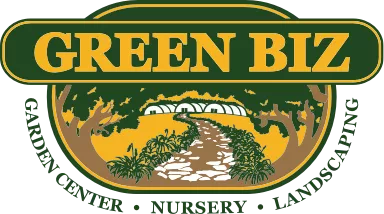By: Tony Penny
Hello,
My name is Tony Penny. I am the “Assistant Nursery Manager” here at Green Biz. I also function as the “Irrigation Technician” as well as, the “Chemical Technician”.
Today I would like to talk to you about “Weeds”.
If you have a lawn or a landscape bed, you probably have weeds. They are inevitable. They too have a cycle of life. Most of the weeds that you see now are “winter annuals”. What does that mean? It means that these particular weeds whole life cycle occurs in the month prier to winter by germinating. Growing through winter and seeding in the spring to start this life cycle over again.
Summer annual weeds are those that occur during the second half of the year. Knowing which weeds you are dealing with and what their life cycle is, will help in choosing the right course of action, if any.
Ok, what is a weed? A weed can be any thing that is growing where it is not desired or wanted. For example, if you have a corn stalk growing in your daylily bed, the corn would be the weed. If daylilies spring-up in your corn field, the daylily would be the weed.
Now, is it necessary to bring chemical solutions into this equation? No, you would simply pull the corn out of the daylilies or visa versa. Many times, this is the best course of action. To simply pull the weeds “before” they go. This is what is called “sweat equity”. No chemical, no fossil fuels involved. Some folks actually enjoy pulling weeds. But most of us don’t. So what now? I turn to science for the solution.
Now that you have learned a little about weeds, you ask. How can science help me?
This is where the chemicals come in.
First off, it is easier to prevent weeds than to get rid of them. Here, an ounce of prevention is worth a pound of cure. How do you get rid of weeds before you have them? By using a “pre-emergence” herbicide. These products are designed to create a vapor barrier that prevents weed seeds from germinating. This is very effective if you don’t have weeds yet.
What if you already have weeds?
In this case you would need a “post-emergence” herbicide. These products are formulated to kill existing weeds.
Are all weeds the same?
There are “grassy” weeds and “broadleaf” weeds. A grassy weed would be “poa ana”, a form of Kentucky bluegrass. This clumpy, blue-green tuff of grass with a white flower is a problem in turf. It’s commonly found in manicured lawns and on golf course fairways and greens.
A “broadleaf” weed, for example is “clover”. Also found in lawns. These have a wide leaf compared to grasses and require a different type of herbicide control. Both the “poa ana” and “clover” are winter annuals.
Can one herbicide control them both?
Yes, these are called “non-selective” herbicides. These products kill everything the come in contact with that is green and growing. The “non-selective” herbicides are used to eradicate everything.
“Selective herbicides” will kill certain weeds and leave the desired crop unharmed.
Always read the entire label before applying any herbicide. Knowing what type of weed you are dealing with, “winter annual”, and “summer annual”, “grassy weeds, of “broadleaf” weeds, will be the first step in controlling your weed problem.
Then when selecting a “pre-emergence”, “post emergence”, “non-selective”, or “selective herbicide, you will achieve the desired result.
I hope that I have enlightened you on the basics of weeds. Until next time.
Sincerely,
Tony Penny
